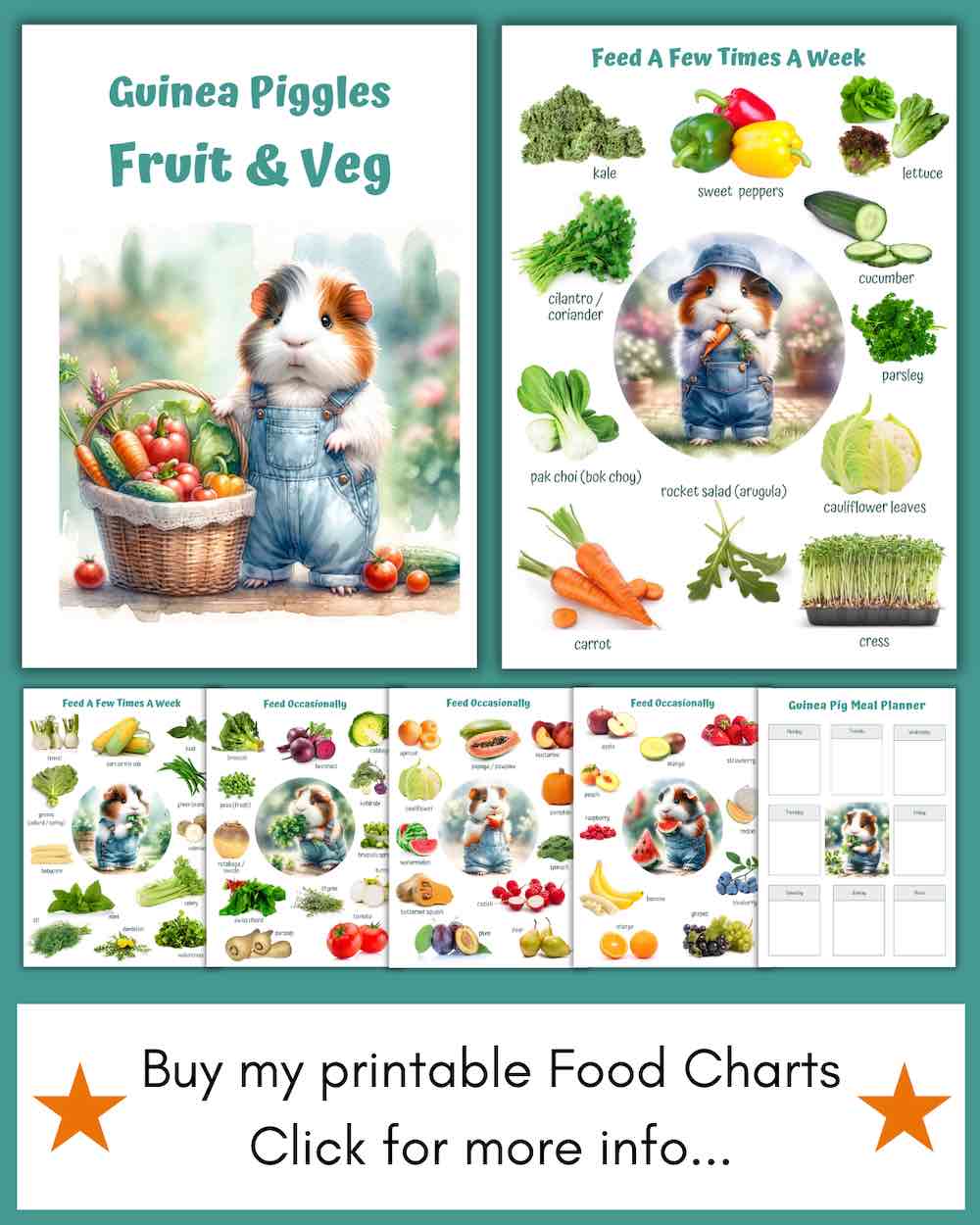Guinea pigs can eat celeriac (celery root) and usually enjoy this mild, crunchy root vegetable. In my experience, it’s more popular than other root vegetables like swede, turnip, or parsnip. Celeriac is safe to feed a few times per week when combined with leafy greens and a variety of other vegetables.
Benefits of Celeriac for Guinea Pigs
- Low sugar — Much lower in sugar than carrots and many other root vegetables, making it a healthier option.
- Good source of vitamin C — Contains more of this essential nutrient than both celery and carrots
- Provides fibre — Contributes to healthy digestion, though leafy greens and herbs are still higher in fibre.
- Crunchy texture — Offers enrichment and variety.
- Popular with guinea pigs — a favourite root vegetable.
❤️ Personal Note – In my experience, guinea pigs really enjoy celeriac — often more than other root vegetables like swede or turnip. Its crisp texture and mild celery flavour make it a welcome addition to their veggie mix.
How to Safely Feed Celeriac to Guinea Pigs
- Frequency: A few times per week.
- Portion size: Small chunks or cubes per guinea pig (roughly the size of a cherry tomato or slightly larger).
- Preparation: Peel the tough outer skin, wash thoroughly, and cut into chunks.
- Mix with other veggies: Combine with leafy greens and vegetables such as kale, dandelion, bell peppers or parsley for a balanced diet.

Nutrition Information
| Nutrition | mg per 100g |
|---|---|
| Vitamin C | 13 |
| Calcium | 41 |
| Sugar | 2.8 |
| Water | 86.6 |
| Fibre | 5.1 |
| Phosphorous | 30 |
Safe Vegetables
🫑 Bell Peppers → Read the Bell Pepper guide ›
🥬 Bok Choy → Read the Bok Choy (Pak Choi / Chinese Leaf) guide ›
🥦 Broccoli → Read the Broccoli guide ›
🥕 Carrots → Read the Carrot guide ›
🌱 Celeriac→ Read the Celeriac guide ›
🌱 Celery → Read the Celery guide ›
🥬 Collard Greens → Read the Collard Greens guide ›
🌾 Corn on the Cob → Read the Corn guide ›
🥒 Cucumber → Read the Cucumber guide ›
🌼 Dandelion → Read the Dandelion guide ›
🌿 Fennel → Read the Fennel guide ›
🌿 French Beans (Fine Green Beans) → Read the French Beans guide ›
🥬 Kale → Read the Kale guide ›
🥬 Lettuce → Read the Lettuce guide ›
🌿 Spinach → Read the Spinach guide ›
🍅 Tomato→ Read the Tomato guide ›
🍃 Watercress→ Read the Watercress guide ›
Safe Fruits
🍎 Apple →Read the Apple guide ›
🍌 Banana →Read the Banana guide ›
🫐 Blueberries →Read the Blueberries guide ›
🍇 Grapes →Read the Grape guide ›
🍈 Melon →Read the Melon guide ›
🍓 Strawberries →Read the Strawberry guide ›
🍉 Watermelon →Read the Watermelon guide ›
Safe Herbs
🌿 Basil → Read the Basil guide ›
🌱 Coriander (Cilantro) → Read the Coriander guide ›
🌿 Dill → Read the Dill guide ›
🌱 Mint → Read the Mint guide ›
🌿 Parsley → Read the Parsley guide ›
